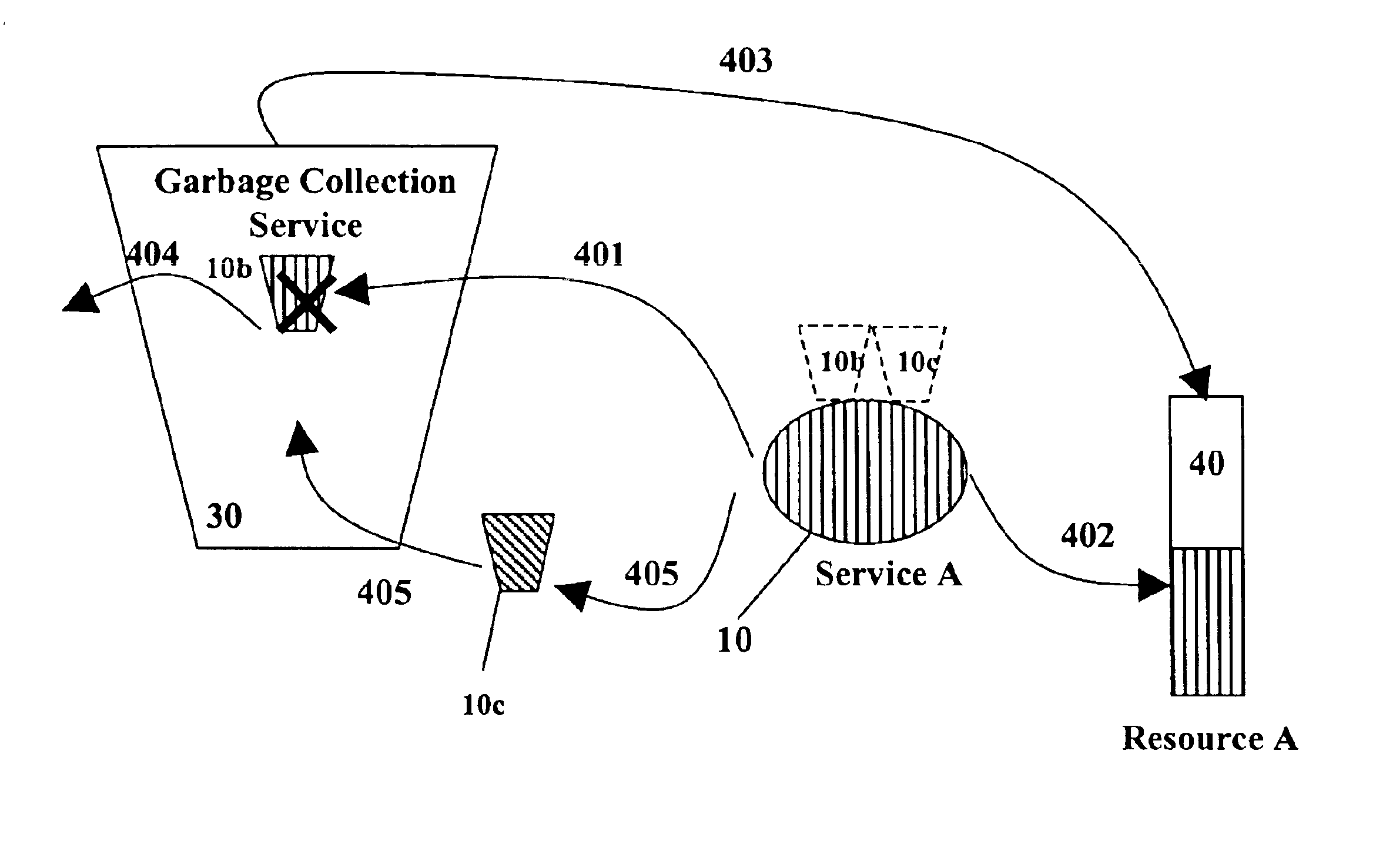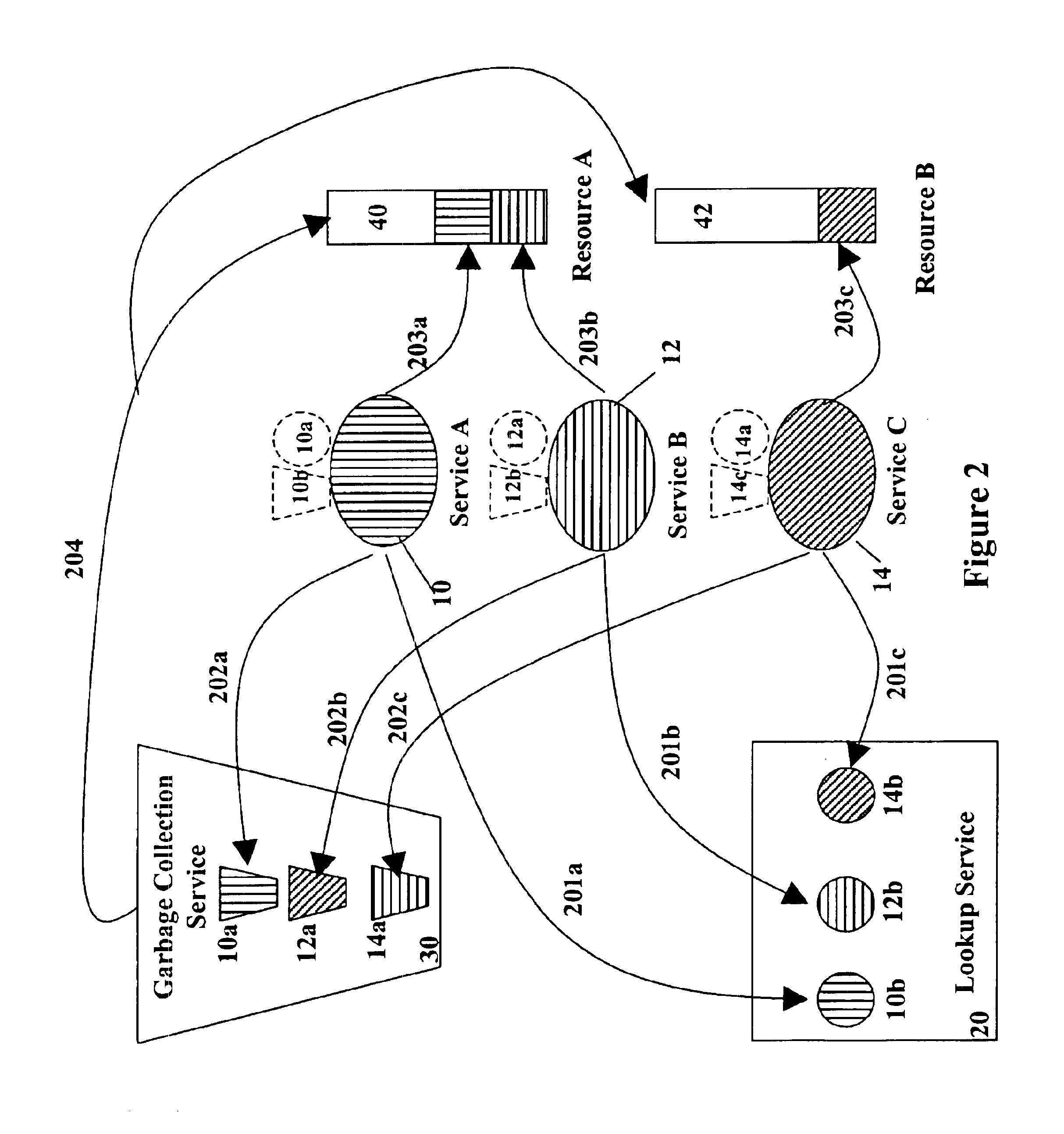Method and system for multimode garbage collection
a garbage collection and multi-mode technology, applied in the field of multi-mode garbage collection, can solve the problems of distributing and dithering the specificity of the pre-compiled option, no guarantee of availability, and the same pre-compiled program cannot move from one platform to another during its execution
- Summary
- Abstract
- Description
- Claims
- Application Information
AI Technical Summary
Benefits of technology
Problems solved by technology
Method used
Image
Examples
Embodiment Construction
[0037]The invention is a method wherein a garbage collection system can employ a plurality of modes of garbage collection for resources, dynamically tune these modes, and dynamically change the mode used for a resource. In one embodiment of the invention a resource can become its own garbage collector. This allows the distributed system to be adjusted so as to optimize the efficiency of garbage collection algorithms, and to minimize the execution and network costs incurred by global garbage collection.
[0038]In the simplest embodiment of the invention the distributed computing system uses the same type of garbage collection throughout the system. Upon some event the method of garbage collection is switched dynamically from one type to another across the distributed system. There may be two, three or more algorithms available to switch between. The event that causes the switch may be a signal sent by a system supervisor (human or automated), the time of day, or reaching a certain leve...
PUM
 Login to View More
Login to View More Abstract
Description
Claims
Application Information
 Login to View More
Login to View More - R&D
- Intellectual Property
- Life Sciences
- Materials
- Tech Scout
- Unparalleled Data Quality
- Higher Quality Content
- 60% Fewer Hallucinations
Browse by: Latest US Patents, China's latest patents, Technical Efficacy Thesaurus, Application Domain, Technology Topic, Popular Technical Reports.
© 2025 PatSnap. All rights reserved.Legal|Privacy policy|Modern Slavery Act Transparency Statement|Sitemap|About US| Contact US: help@patsnap.com



